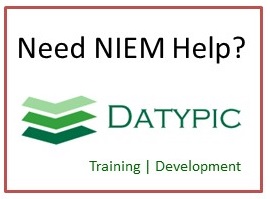gml:AbstractTimeSlice
To describe an event — an action that occurs at an instant or over an interval of time — GML provides the gml:AbtractTimeSlice element. A timeslice encapsulates the time-varying properties of a dynamic feature -- it shall be extended to represent a time stamped projection of a specific feature. The gml:dataSource property describes how the temporal data was acquired. A gml:AbstractTimeSlice instance is a GML object that encapsulates updates of the dynamic—or volatile—properties that reflect some change event; it thus includes only those feature properties that have actually changed due to some process. gml:AbstractTimeSlice basically provides a facility for attribute-level time stamping, in contrast to the object-level time stamping of dynamic feature instances. The time slice can thus be viewed as event or process-oriented, whereas a snapshot is more state or structure-oriented. A timeslice has richer causality, whereas a snapshot merely portrays the status of the whole.
Element information
Namespace: http://www.opengis.net/gml/3.2
Schema document: external/ogc/gml/3.2.1/dynamicFeature.xsd
Type: gml:AbstractTimeSliceType
Properties: Global, Qualified, Abstract
Content
- Sequence [1..1]
- gml:metaDataProperty [0..*]
- gml:description [0..1]The value of this property is a text description of the object. gml:description uses gml:StringOrRefType as its content model, so it may contain a simple text string content, or carry a reference to an external description. The use of gml:description to reference an external description has been deprecated and replaced by the gml:descriptionReference property.
- gml:descriptionReference [0..1]The value of this property is a remote text description of the object. The xlink:href attribute of the gml:descriptionReference property references the external description.
- gml:identifier [0..1]Often, a special identifier is assigned to an object by the maintaining authority with the intention that it is used in references to the object For such cases, the codeSpace shall be provided. That identifier is usually unique either globally or within an application domain. gml:identifier is a pre-defined property for such identifiers.
- gml:name [0..*]The gml:name property provides a label or identifier for the object, commonly a descriptive name. An object may have several names, typically assigned by different authorities. gml:name uses the gml:CodeType content model. The authority for a name is indicated by the value of its (optional) codeSpace attribute. The name may or may not be unique, as determined by the rules of the organization responsible for the codeSpace. In common usage there will be one name per authority, so a processing application may select the name from its preferred codeSpace.
- gml:validTime [1..1]gml:validTime is a convenience property element.
- gml:dataSource [0..1]Evidence is represented by a simple gml:dataSource or gml:dataSourceReference property that indicates the source of the temporal data. The remote link attributes of the gml:dataSource element have been deprecated along with its current type.
from type gml:AbstractGMLTypefrom group gml:StandardObjectProperties
Attributes
| Name | Occ | Type | Description | Notes |
|---|---|---|---|---|
| gml:id | [1..1] | xsd:ID | The attribute gml:id supports provision of a handle for the XML element representing a GML Object. Its use is mandatory for all GML objects. It is of XML type ID, so is constrained to be unique in the XML document within which it occurs. | from type gml:AbstractGMLType |
Used in
- Type gml:ArrayAssociationType (Element gml:members)
- Type gml:HistoryPropertyType (Elements gml:track, gml:history)
Substitution hierarchy
- gml:AbstractObject
- can be substituted with gml:AbstractGML
- can be substituted with gml:AbstractTimeSlice
- can be substituted with gml:MovingObjectStatus
- can be substituted with gml:AbstractTimeSlice
- can be substituted with gml:AbstractGML



